Irrigation is the man-made supply of water to land for the growing of crops or any other vegetation by means of furrows, channels or pipelines where the rainfall cannot provide the required water for sustained growth and production of crops.
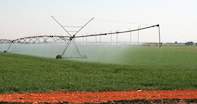
As the world population grows and all natural ecosystems and resources are being abused and put under immense pressure, fresh water is fast becoming the most important commodity after clean air on earth.
It is, therefore, all the more important that better and more efficient methods and systems are being designed to save water but still provide what is required for the ever-increasing crop yields required from an area of soil.
Types of Irrigation Systems
The five main types of irrigation are described and illustrated below.Flood Irrigation
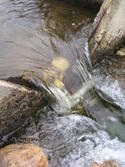
Sprinkler Irrigation
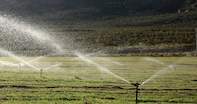
Centre Pivot Irrigation
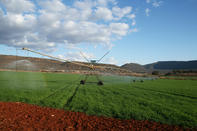
This is an automated sprinkler system that is driven by either electricity or by the mechanical power of the water driving an automotive system that turns the wheels on which an arm of pipe extends to the furthest point away from the water source. It can move in a full or any part of a circle as is required.
The sprinklers at the centre will be smaller giving less water and the sprinklers will get gradually bigger giving more water moving outwards along the extended arm with the biggest sprinkler located at the end of the arm because here the pivot moves faster over the ground so more water needs to be released at any given time.
Micro-drip Irrigation
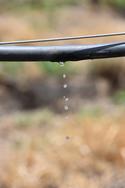
This is considered the most economical and effective system and is being used more often as water gets scarcer. With drip irrigation, much lower pressures of between 15 and 25 psi are required to apply the water. The water is fed by drippers that drop droplets directly onto the ground, concentrating application at the root zone area near the stem.
In some cases, the drip pipelines are laid underground so that the water is delivered directly to the root zone further lessening loss by evaporation and lessening weed growth around the plant. For drip irrigation water must be very well filtered because any debris allowed into the pipes will block the tiny holes in the pipes. This is more difficult to monitor if all the drippers are functioning.
Micro-spray Irrigation
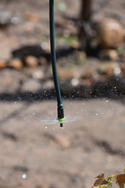
Micro-spray is a cross between sprinkler irrigation and micro-drip irrigation. It has some of the advantages and some of the disadvantages of each type of irrigation. As with drip irrigation, micro-spray irrigation is considered a low-pressure irrigation typically being able to operate with pressures between 15 and 25 psi.
Micro-spray irrigation creates a larger wetted area than drip irrigation, making it well suited for irrigating trees, large vegetable beds and areas where the soil is sandier and more porous. Evaporation is higher and unlike drip, it increases the prevalence of weeds around your subject plant’s stem.